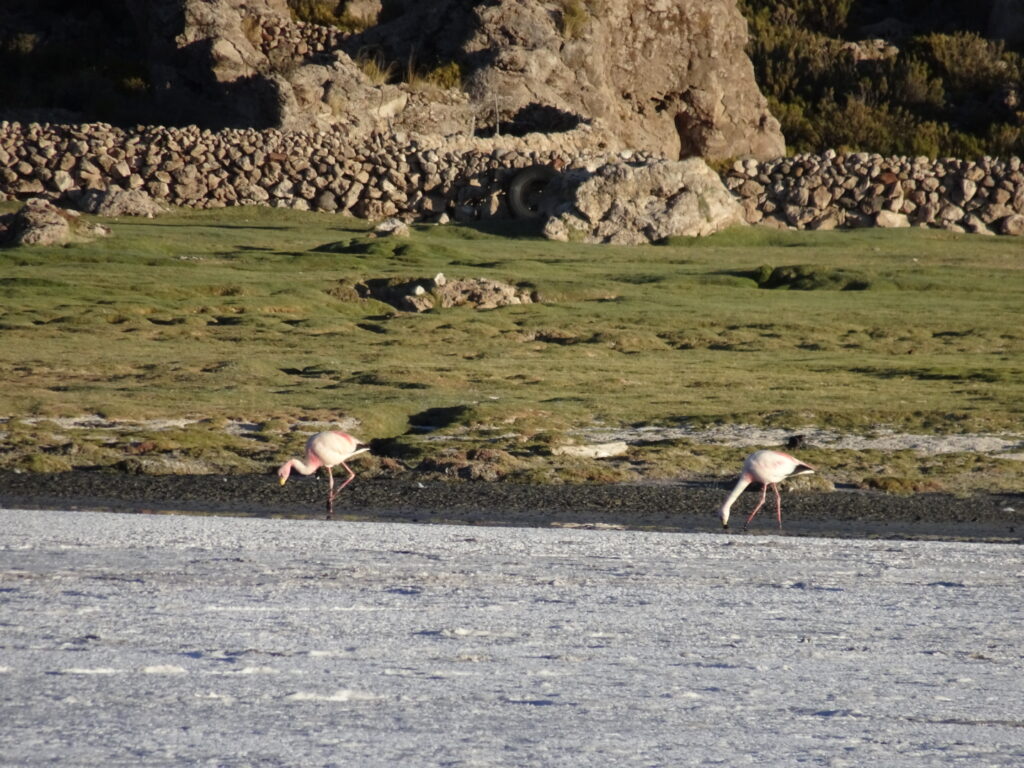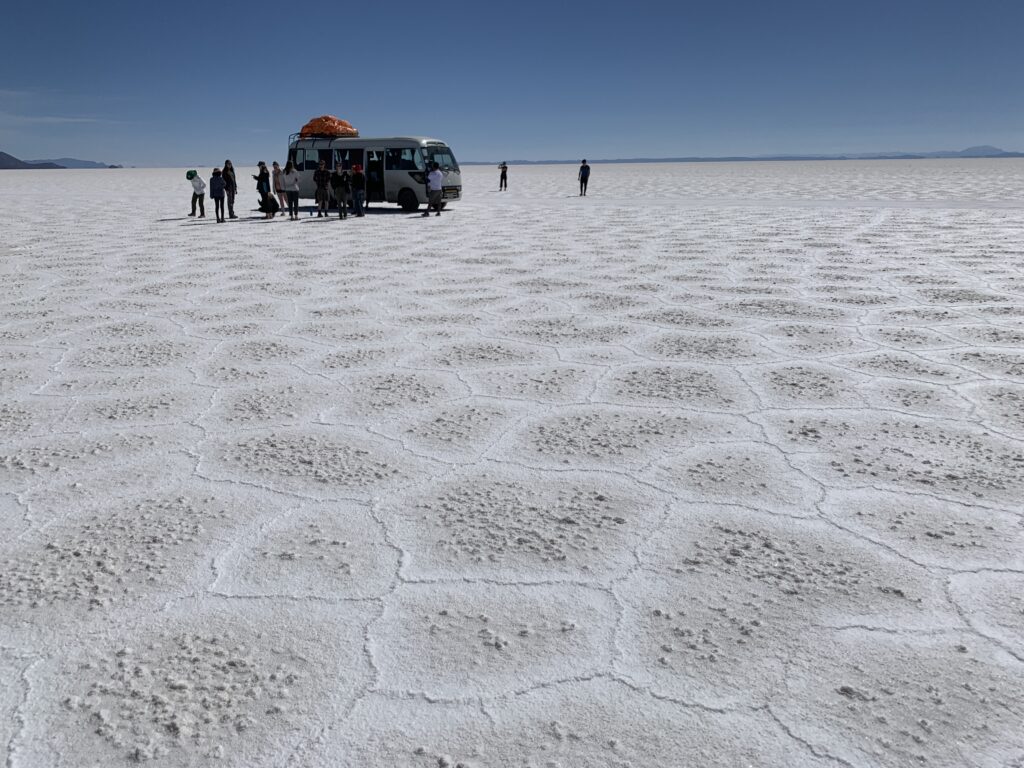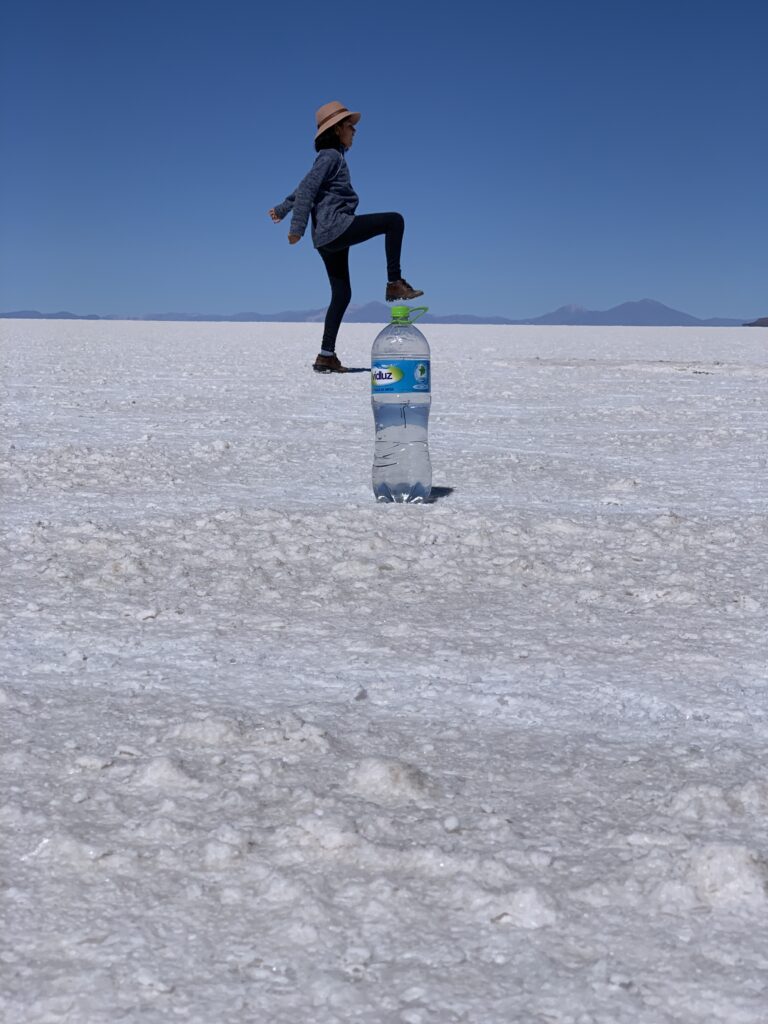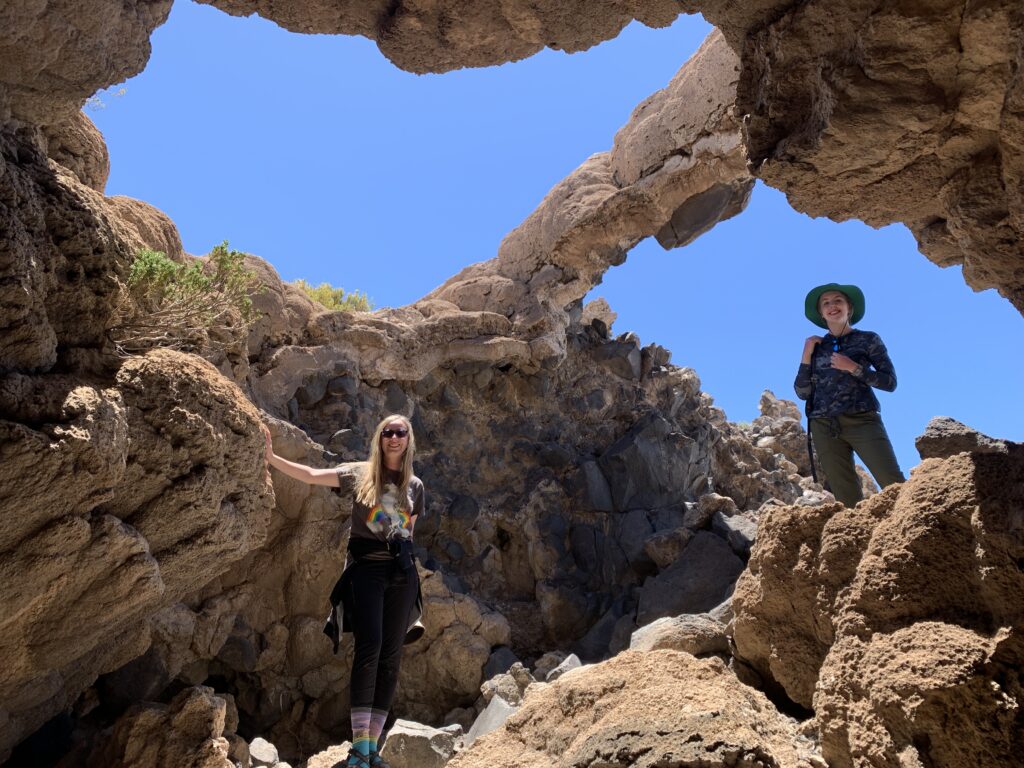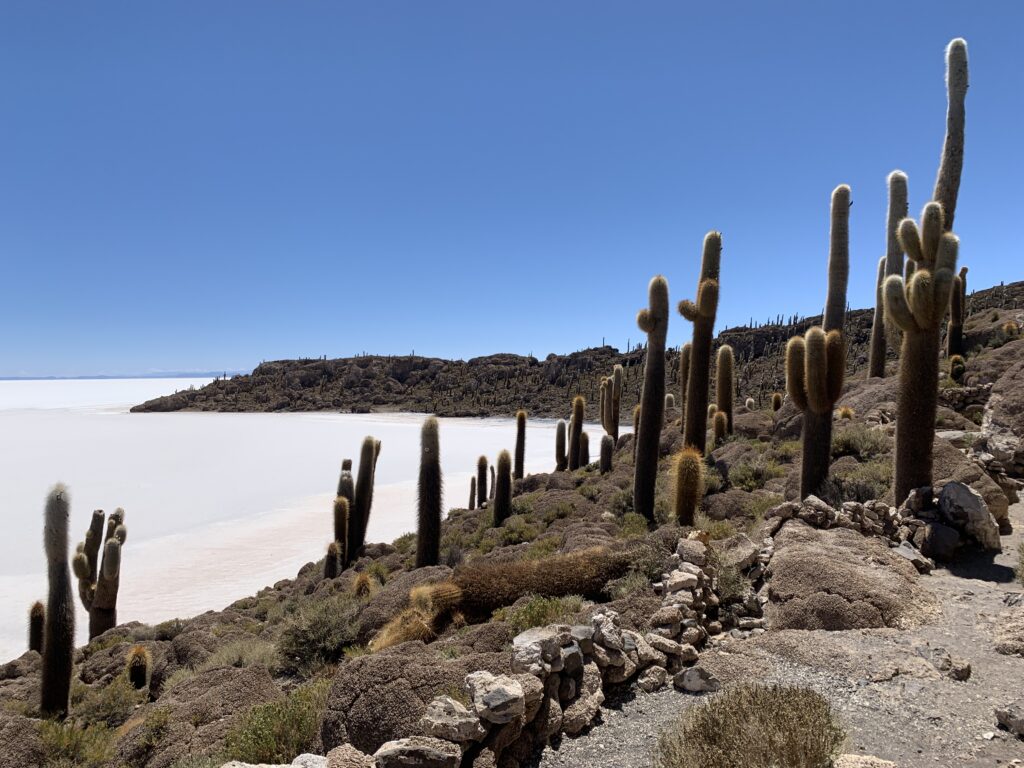The Salar de Uyuni is the world’s largest salt flat and may contain the world’s largest deposit of lithium, an element critically important for the production of the lithium batteries that power everything from cell phones to Teslas. We had a talk from the CEO of the national lithium industry from 2009 until 2019, and he explained the value and processes used to extract lithium from the brine under the hard salt crust of the Salar. Bolivia hopes to use a more environmentally friendly process of “direct extraction” that uses far less water than traditional means, but is still looking for international partners with the expertise in doing this.
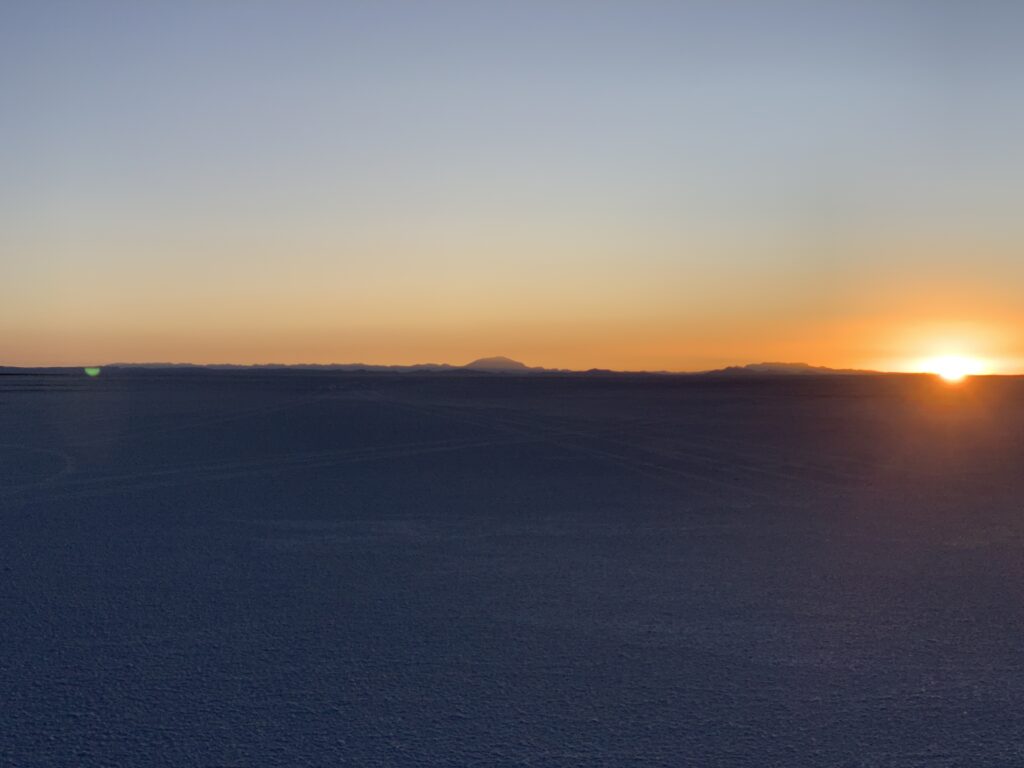
For us, the Salar was a wonder of white stretching into the hazy montane distance, with the Cordillera Real (the Andes mountains bordering on the Chile border) rising snow-capped in the far distance. We had a few opportunities to be out on the salt, starting with a pre-sunrise visit organized by Addie and joined by Isabella, Maddi, Emily, and myself. Though setting one’s alarm for 5:35 in the morning seemed like masochism when we had been operating on such little sleep, the view of the sun rising over the salt flat was worth it.
That day we drove our bus over the salt flat to Isla Incahuasi, a small, cactus-studded island in the middle of the Salar. There we explored the ancient coral outcrops (it made me long to go snorkeling over this long-vanished ecosystem and swim with the fishes and other creatures there) and tried (mostly successfully) to avoid spearing ourselves on the long spines on the tall cacti that could be hundreds of years old. We ate our box lunch on salt picnic tables, then returned to the bus for our 6-hour drive to Oruro.


